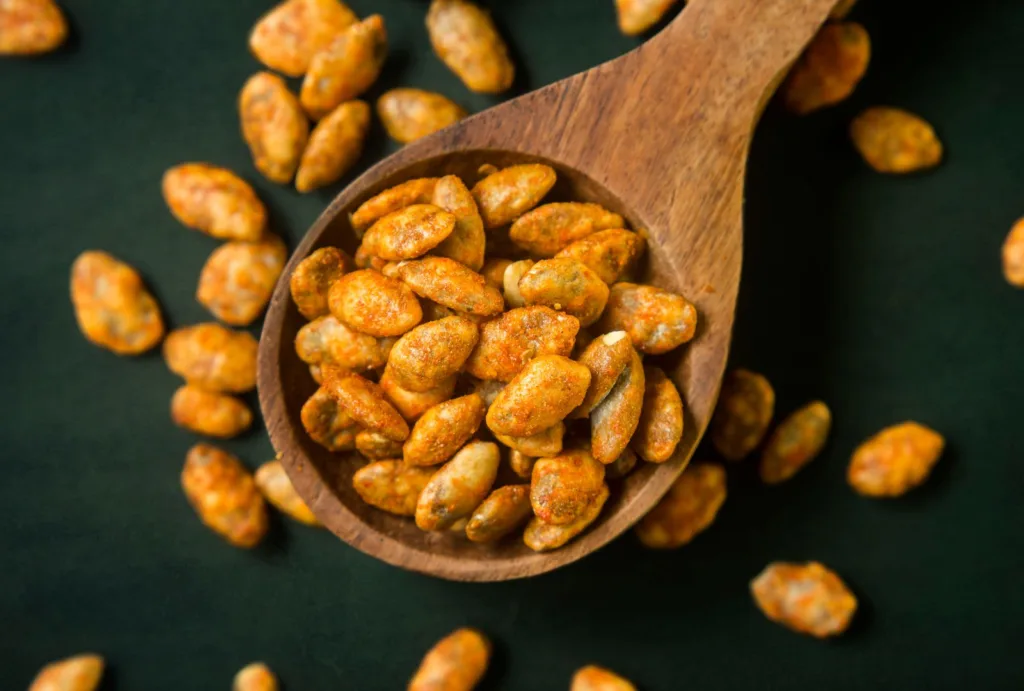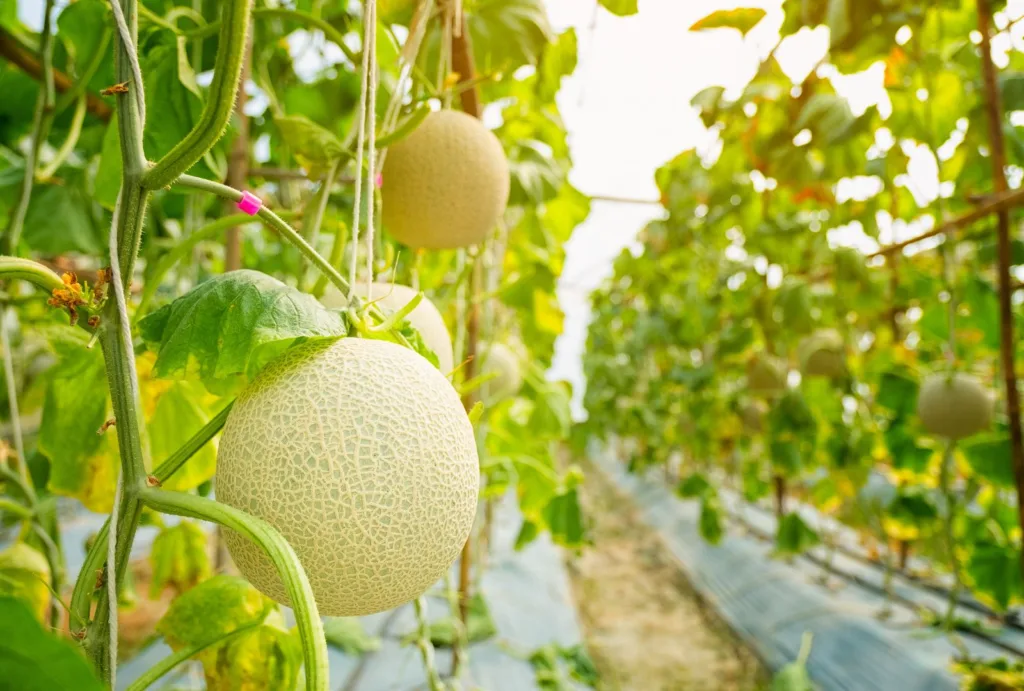It’s a hot summer day, you’re parched, and you could really go for something refreshing. Now, imagine biting into a juicy slice of cantaloupe. The sweet, orange flesh not only quenches your thirst but also transports you to a moment of pure bliss. But did you know that this melon could be doing wonders for your heart health and so much more? Ah, we’ve got your attention now!
What’s in a Name? Mystery of Cantaloupe

Cantaloupe vs. True Cantaloupe: A Case of Mistaken Identity?
Have you ever pondered over the produce in your local grocery and thought, “What’s the deal with these melon names?” Well, you might be surprised to learn that the cantaloupe you’re familiar with in the United States isn’t the true cantaloupe. That’s right, the true cantaloupe (Cucumis melo var. cantalupensis), with its hard, warty rind, is a European native and somewhat of a rarity stateside. The cantaloupes we know and love, with their characteristic netted rind, are actually muskmelons!
The United States’ Love Affair with Cantaloupe
It’s no secret that Americans have a soft spot for cantaloupe. But why, you might ask? Is it the melon’s mouthwatering sweetness or its refreshing texture that has captured the hearts (and taste buds) of people across the nation? Maybe it’s the versatility of this orange-fleshed delight that has us incorporating it into every meal from breakfast to dinner, and let’s not forget the fruit salads!
A Delight at Room Temperature
How to Enjoy Cantaloupe
The Best Ways to Store and Serve Cantaloupe
Ever brought home a cantaloupe and wondered why it didn’t taste quite as magical as you remembered from that summer picnic? The secret, my friend, could lie in the temperature. Believe it or not, cantaloupes are best enjoyed at room temperature. Storing them in the fridge before they’re ripe can lead to a less flavorful experience. To get the most out of your melon, let it ripen on your counter and only give it a chill if you’re craving that cold melon bite.
Cantaloupe Serving Suggestions: From Greek Yogurt to Fruit Salad
Now, let’s talk serving. The classic: a sunrise breakfast of cantaloupe slices with a dollop of Greek yogurt. It’s the duo you didn’t know you needed—until now. But don’t stop there; cantaloupe plays well with others. Toss it into a fruit salad and watch it mingle with berries and its cousin, the honeydew. Or, for a savory twist, pair it with prosciutto for a dance of sweet and salty on your palate. Are you getting hungry yet?
The Heart of the Matter
Cantaloupe and Heart Health

Cantaloupe’s Nutritional Profile: A Heart-Healthy Choice
When it comes to ticking the boxes for heart health, cantaloupe does it with ease. This melon is a treasure trove of nutrients without piling on the calories. Ever wonder what’s behind that beautiful orange color? That’s beta carotene, an antioxidant that’s not just good for your eyes—it’s a boon for your heart too! And let’s not forget about the potassium in cantaloupe, which helps keep your blood pressure in the happy zone. So, could a slice a day keep the cardiologist away? It’s a tasty hypothesis worth considering!
Beta Carotene and More: How Cantaloupe Can Help Reduce the Risk of Heart Disease
But wait, there’s more! This melon isn’t just a one-trick pony. Cantaloupe is also rich in vitamin C, fiber, and water, all of which play a role in maintaining a healthy heart. The fiber helps manage cholesterol levels, while the hydration factor keeps everything flowing smoothly. And vitamin C? It’s like that friend who always has your back, helping to protect against heart disease. Who knew a melon could do so much?
Cantaloupe in the Kitchen
Simple and Delicious Recipes

The Classic Duo: Cantaloupe and Greek Yogurt
Let’s circle back to that breakfast of champions: cantaloupe and Greek yogurt. But it’s not just about slicing and dolloping. Have you ever tried blending them together? Imagine a smoothie that’s not only a treat for your taste buds but also a feast for your eyes with its vibrant orange hue. Add a drizzle of honey and a sprinkle of chia seeds, and you’ve got yourself a breakfast that’s both nutritious and Instagram-worthy.
Getting Creative with Cantaloupe: Unexpected Pairings and Dishes
Who says cantaloupe is only for breakfast or dessert? Let’s get adventurous. Picture a chilled cantaloupe soup on a warm afternoon, a refreshing change from the usual. Or what about skewers of cantaloupe and shrimp on the grill, with a glaze of balsamic reduction? The possibilities are as limitless as they are delicious. And for those with a sweet tooth, cantaloupe sorbet is a summertime must-try. Are your culinary juices flowing yet?
Beyond the Flesh
Other Uses for Cantaloupe
From Seeds to Skin: The Lesser-Known Uses of Cantaloupe
You might be tossing out one of the best parts of the cantaloupe without even realizing it. Those seeds you scoop out and discard? They’re actually edible and packed with nutrients. Roasted cantaloupe seeds make a crunchy snack that rivals your favorite nuts. And the skin, while not edible, has its own secret superpower—composting. Cantaloupe rinds enrich your compost pile, turning what you might consider waste into garden gold.
The Health Benefits of Cantaloupe Seeds
But back to those seeds—did you know they’re a source of omega-3 fatty acids? Yes, the same heart-healthy fats you find in fish. They also contain a decent amount of dietary fiber. So next time, think twice before you throw them away. A little rinse, some seasoning, a quick roast, and voilà, you have a healthy topping for salads, soups, or just to munch on.
Navigating the Supermarket
How to Pick the Perfect Cantaloupe

The Tell-Tale Signs of a Ripe Cantaloupe
Ever feel like you need a detective’s skills when picking out fruit? With cantaloupe, there are some clues that can help. First, give that melon a sniff. The sweet, musky aroma is a giveaway that it’s ripe for the taking. Then, look for the rind’s background color to be creamy or golden, not green. And here’s a little secret: check the blossom end—it should yield slightly to gentle pressure, indicating the perfect ripeness.
When to Go Organic: Deciding on the Best Cantaloupe for You
Organic or not? That’s the question on many health-conscious minds. If you’re looking to reduce exposure to pesticides, organic cantaloupe might be the way to go. But whether you opt for organic or conventional, always wash the rind thoroughly before cutting to prevent any bacteria on the surface from mingling with the sweet flesh.
Cantaloupe and Its Cousins
Exploring the Melon Family
Meet the Relatives: Honeydew Melon and Others
Cantaloupes aren’t the lone rangers of the melon world. They’re part of a juicy, diverse clan that includes the likes of honeydew and casaba. Each member of the melon family has its unique flavor and texture, but they all share that refreshing quality we love. Have you ever tried a honeydew melon? It’s sweeter and firmer than cantaloupe, with a gorgeous light green flesh that screams ‘summer is here!’
The Versatility of Melons: Why Cantaloupe Stands Out
While all melons can boast their hydrating and nutritional benefits, cantaloupe really stands out when it comes to versatility. Its sweetness complements both sweet and savory dishes, making it a favorite among chefs and home cooks alike. From a prosciutto-wrapped appetizer to a pureed cantaloupe cocktail, this melon knows no bounds. And let’s not forget that it’s a powerhouse of nutrients, too.
Final Thoughts
It’s easy to overlook the cantaloupe among the flashier fruits out there. But as we’ve peeled back the layers, it’s clear that this melon is a true unsung hero in the fruit world. Whether you’re looking for a heart-healthy snack, a culinary adventure, or just a sweet treat, cantaloupe has you covered.
Now, it’s your turn to get creative. Slice it, dice it, blend it—how do you enjoy your cantaloupe? Maybe you’ve got a family recipe that turns cantaloupe into the star of the show, or perhaps you’ve discovered a new way to pick the perfect one. Share your stories and tips in the comments below. Let’s celebrate the cantaloupe together!




